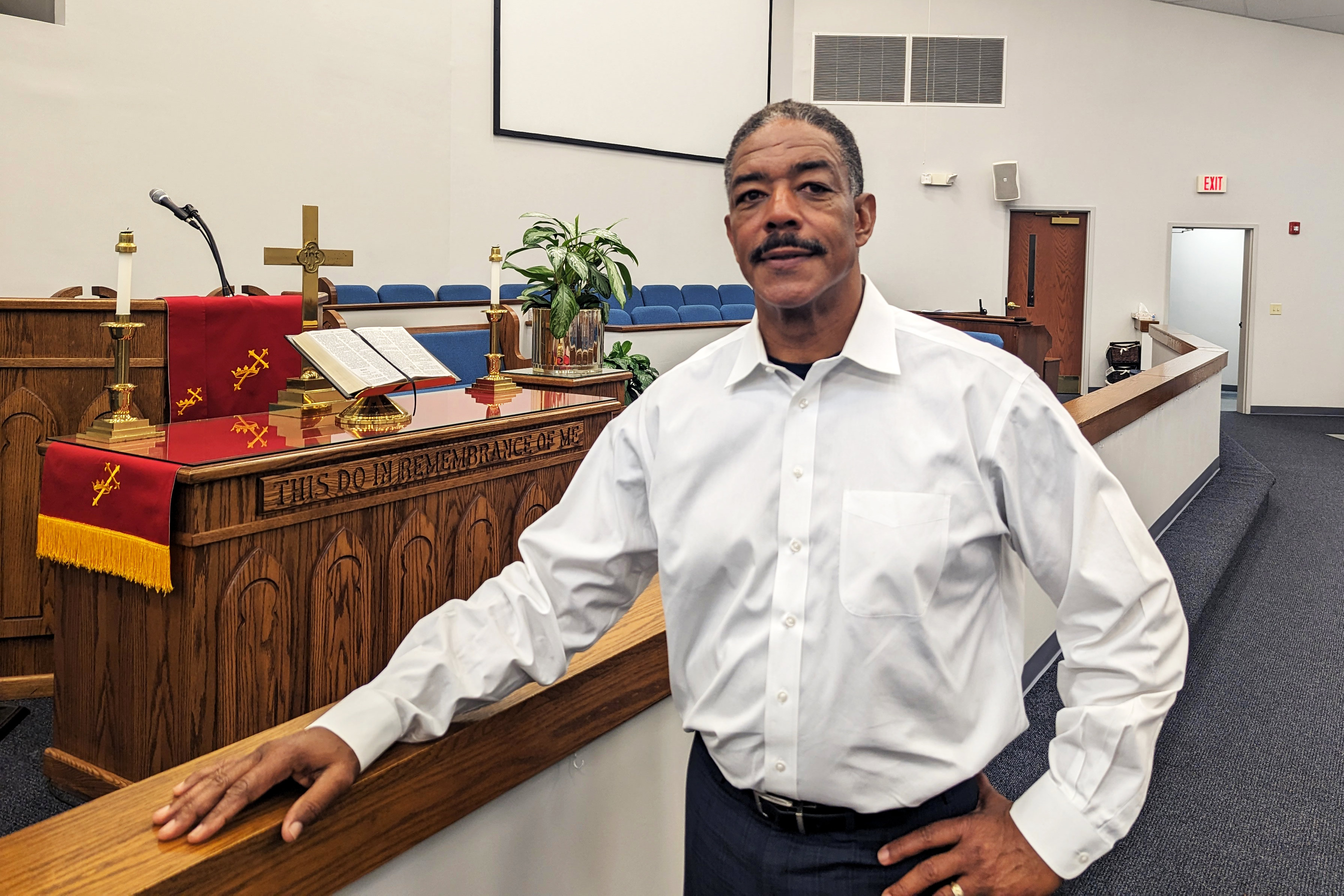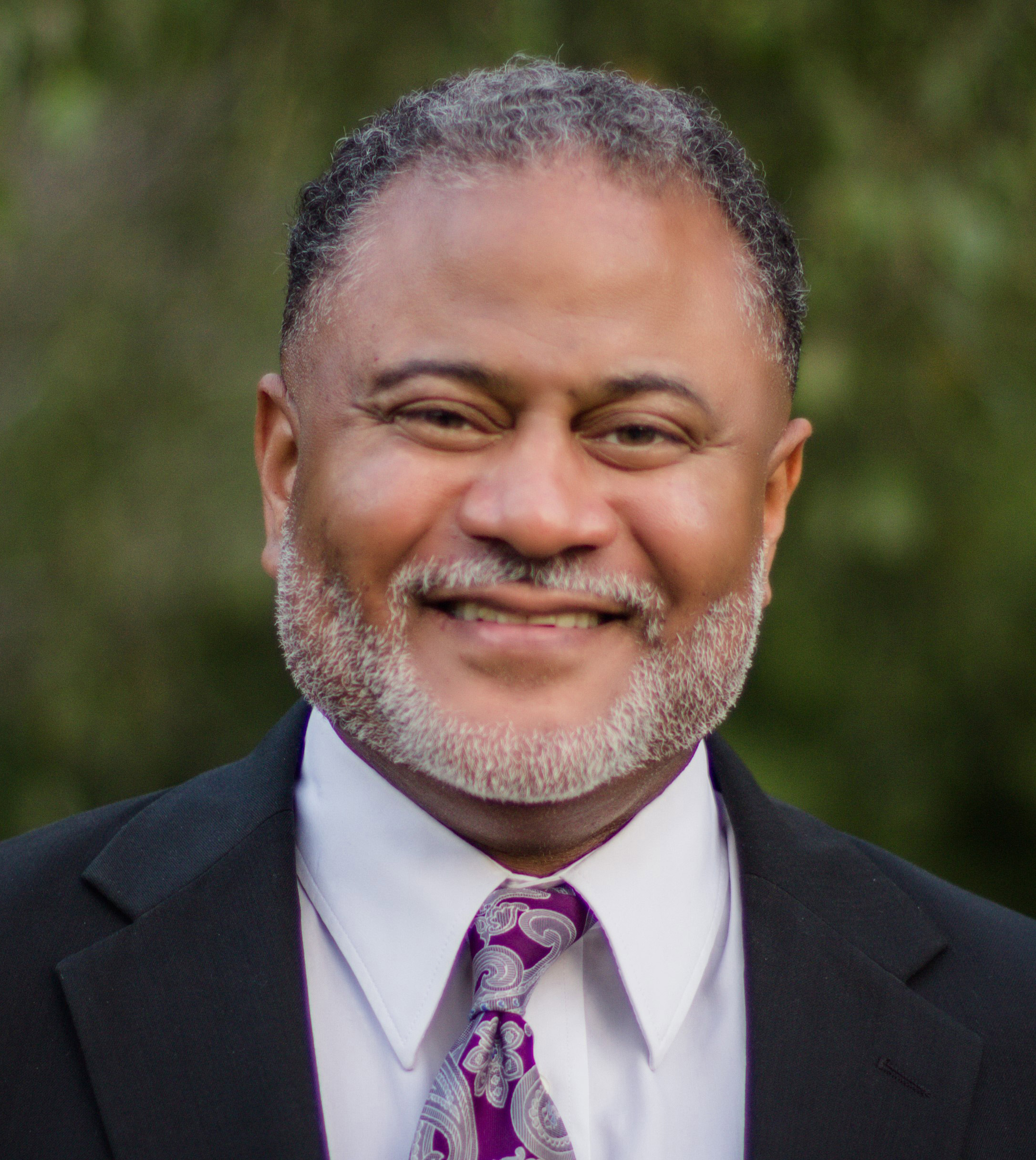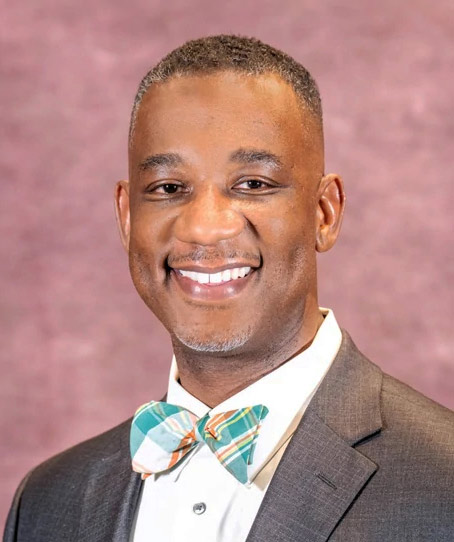CHARLOTTE, N.C. — As covid-19 devastated communities across the nation in spring 2020, a group of Black ministers in this racially divided city made an urgent plea for more testing in their neighborhoods.
Testing at the time “was outside of communities of color,” said the Rev. Jordan Boyd, pastor of Rockwell AME Zion Church in Charlotte. For Boyd, pandemic losses were personal: Covid-related complications killed a brother-in-law who worked as a truck driver. “We saw what was happening with our folks.”
Mandy Cohen, who led the state’s pandemic response as secretary of North Carolina’s health department, had said widespread testing was one of “our best tools to keep our community safe and to protect our frontline workers.” But the state was failing to get tests to its most vulnerable people, with grim consequences: Black people in North Carolina were getting sick and dying from covid-related causes at far higher rates than white people, data show.
KFF Health News analyzed and confirmed publicly available data, including the location of testing sites that Cohen’s office directed the public to in mid-May 2020 in Mecklenburg County, home to Charlotte, the state’s largest city. Just 1 in 4 fixed sites stood in more disadvantaged areas with significant Black populations, including what is known as the Crescent, neighborhoods reaching west, north, and east of downtown that for generations have had elevated rates of diabetes, high blood pressure, lung disease, and other conditions that can cause life-threatening complications from covid. Far more testing was available in south Charlotte and suburban areas — the whiter, wealthier neighborhoods.
Life in the Crescent is marked by higher rates of poverty, crowded housing, and less access to health care, transportation, and internet service — factors that fueled transmission of the virus and created barriers to testing.
“There were a lot of hurdles that you had to go through,” said Boyd, who helped spearhead the effort to bring testing to Black churches.
President Joe Biden and others in political and health policy circles have praised Cohen’s pandemic leadership in North Carolina. Biden in June cited her “proven track-record protecting Americans’ health and safety” when elevating Cohen to run the Centers for Disease Control and Prevention, the nation’s top public health agency.
Those on the ground in North Carolina’s most vulnerable communities, including Cohen’s admirers, tell another story — about living with the downsides of the state’s emergency response. These include advocates for groups that were disproportionately harmed during the public health crisis, including minority and immigrant communities, people with disabilities, and families of nursing home residents.

Corine Mack, president of the Charlotte-Mecklenburg NAACP, recalled that in late 2020 she and others complained to Cohen about public money going to white-led organizations instead of Black-led ones working in minority neighborhoods.
“I said we had to send resources tomorrow, not next month,” Mack said. “She started crying. I was so passionate about our people dying. Once she understood the severity of the situation, she did what she had to do.”
The challenges Cohen faced in North Carolina were exacerbated by structural inequities in and outside the health care system, problems that are too large for any one person to fix. Still, Cohen now faces the same challenges on a national scale, as she’s charged with fixing the CDC after its pandemic missteps.
Cohen, through her spokesperson at the CDC, declined multiple requests for an interview.
A report in January called “Building the CDC the Country Needs,” which was signed by dozens of health policy experts, urged an agency overhaul. Among the priorities cited: more quickly collecting data on racial, ethnic, economic, and geographic factors that is “foundational to improving equity of access to services.”
For most of the pandemic, Black, Hispanic, and Native Americans fared worse than whites across the country.
In North Carolina, critics and allies alike say Cohen heeded concerns. She relied heavily on data and followed federal guidance closely, they said. And Cohen showed vigilance when she interpreted rules, like those on nursing home visitation and mask mandates, even in the face of criticism.
She also repeatedly urged personal responsibility to contain the spread of the virus, underscoring how public health messaging often focuses on choice rather than societal constraints, said Anne Sosin, a researcher at Dartmouth College who focuses on health equity.
“Many of the people and communities hardest-hit by the pandemic had little choice in their exposure” because they got covid where they lived or worked, Sosin said. “Limiting our focus on the choices that people make — rather than on the broader structural and social forces that shape risk — really will set us up for the same failures in the future.”
With more than 1 million residents, Mecklenburg County has become a symbol both of North Carolina’s economic rise and of its struggles to overcome a long history of racial discrimination and disparities. A short drive from the headquarters of Fortune 500 companies, such as Bank of America and Honeywell, sit minority neighborhoods plagued by poverty. A national study on social mobility found that, among the 50 largest cities, Charlotte was the hardest place for a child to move from poverty to the upper class.
Researchers from North Carolina’s health agency and the University of North Carolina found that access to tests during the first three months of the pandemic — between March and June 2020 — was not evenly distributed across racial and ethnic groups, with inadequate access for Black and Latino residents.
On May 14, 2020 — two months after the national emergency was declared — Cohen’s agency directed clinicians to prioritize testing for people from “racial and ethnic minority groups disproportionately affected by adverse COVID-19 outcomes,” and officials recommended using mobile testing for “vulnerable populations,” documents show.
The disparities persisted. In Charlotte, the difference in testing sites underscored the inequity people of color often face in health care, as they were left to depend on a few mobile units whose routes and hours varied by the day. Meanwhile, wealthier areas had an abundance of well-resourced, fixed sites with regular hours.
Critics say the state was slow to address glaring and predictable problems. Mecklenburg County Commissioner Pat Cotham, a Democrat, said it took authorities precious time to shift testing to the hardest-hit neighborhoods. Cotham said officials should have more quickly enlisted Black ministers and others who had established trust with residents. Instead, she said, even elected representatives of those areas were often locked out. “I remember getting information from press releases or TV,” she said.
North Carolina initially failed to prioritize testing for people who were exposed to covid because of where they live or work, said Jeanne Milliken Bonds, a professor of social impact investing at the University of North Carolina. She co-authored a white paper that criticized the national pandemic response, saying, “We are ignoring the critical impact of systemic racism in vulnerabilities to the deadly virus.”
Black people, immigrants, and ethnic minorities disproportionately hold jobs that governments deemed essential — in food processing plants, retail stores, and nursing homes — and they were unable to isolate and work from home, Milliken Bonds said.
Charlotte had one of the biggest disparities in access to testing in the nation, according to a study of 30 large cities by researchers at Drexel and Temple universities. Only Austin and Houston in Texas fared worse.
In 2020, Black people in North Carolina died from covid at a higher rate than white people, although the disparity was slightly less pronounced than in the U.S. overall. A KFF Health News analysis of CDC data shows that 112 of every 100,000 non-Hispanic Black residents in the state died, compared with 89 per 100,000 non-Hispanic white residents. North Carolina’s death rates for all racial and ethnic groups that year were lower than those nationally.
“The driving factor for testing and vaccination was, ‘Let’s get older people and let’s protect our health care workers,’” Milliken Bonds said. “You end up losing the health equity lens. There was a course correction later in 2020. They looked at the data and said, ‘Oh my God!’ They were missing people of color.”
Tensions Rose
In April 2020, when covid tests were scarce nationally and states had little federal support, Cohen’s Department of Health and Human Services convened a work group to increase testing. The initiative began as Democratic Gov. Roy Cooper indicated he would ease the restrictions he’d put in place in March to limit covid’s spread.
The group included state employees, consultants, local officials, and representatives from major hospital systems, community health centers, and commercial labs, North Carolina HHS news releases and state documents show. Officials set priority groups for testing, including hospitalized patients, health care workers and first responders, and people in long-term care or correctional facilities, according to meeting minutes from April 24. The last item: “additional emphasis on equity and ensuring communities of color have access to testing.”
The state also received guidance from experts focused on equity.
“We know that there’s more covid-19 out in our communities than gets captured by what’s in our lab data,” Cohen said April 30, during one of Cooper’s pandemic briefings.
Of the covid test results reported to North Carolina’s health department at that time, a smaller share were coming back positive relative to prior weeks, and covid hospitalizations were level — developments Cohen hailed as progress. But tensions were brewing.
By May 5, Disability Rights North Carolina filed a civil rights complaint with the U.S. Department of Health and Human Services about a proposed state emergency plan. The advocacy group said the plan — which determined who would get lifesaving treatments in hospitals if supplies were scarce — would put people with disabilities in the “back of the line” and lead to a disproportionate death toll among people of color or with low incomes.
As the state began reopening businesses in early May, officials knew testing levels were not adequate, according to a review of public documents, interviews, and Cohen’s public remarks. Hundreds of sites were up and running, “but there’s more to do,” Cohen said May 20.
In a letter in the North Carolina Medical Journal, North Carolina HHS employees and a consultant with Accenture said “testing was difficult to access outside of a hospital” that month. “Of the tests being performed early in the pandemic, the majority were in White populations even though we could already see differences in poor outcomes in Black/African American, American Indian/Alaskan Native, and Latinx populations infected with the virus around the country,” they wrote.
Kody Kinsley, who worked for Cohen and succeeded her as health secretary, said the state’s response was stymied by factors beyond its control, including supply chain shortages. “We were essentially riding the backbone of the existing health care network with inadequate supplies,” Kinsley said. The department tried to contract with outside firms to boost testing access in historically marginalized communities, but “resources weren’t available.”
Boyd, the pastor, said it was “difficult times.” To reach hard-hit communities across the state, “you have to be able to do that through connections on the ground,” he said. “Otherwise it’s not going to happen. But that takes time.”
In Charlotte, he said, fixed testing sites at hospitals and elsewhere, which required appointments, weren’t as accessible for those in the city’s poorest neighborhoods. “You had to go online and sign up,” he said.
Black residents were desperate for testing: When a mobile van run by Atrium Health, the dominant hospital system in Charlotte, arrived at Boyd’s church in early May, “Cars were lined up around the block at 4 or 5 o’clock in the morning,” he said.
Atrium’s mobile testing started in April, circulating in minority communities where data showed emerging hot spots. While people could walk up to get a test, locations shifted daily, according to internet archives, social media posts, and other announcements. Between mid-April and early July, the units stopped at many Black churches only once.
“We were last on the list. We lost a lot of people,” said Vilma Leake, a Democratic member of the Mecklenburg Board of County Commissioners. Leake said she never received a satisfactory answer when she asked why people of color were not prioritized for testing given the South’s long history of racial exclusion and wide disparities in health, education, and income. “History is repeating itself. It is always a fight for some people,” she added.
Kinsley said the state’s response “was intentionally designed to be conscious of class and race and ethnicity,” which he said informed its guidance for essential workers and efforts to push businesses to provide paid leave and on-the-job covid tests.
By late spring, the state’s testing data, which captured only a fraction of infections, painted a troubling picture. As of May 26, Black residents made up 31% of cases and 35% of deaths despite being 22% of the state’s population. Latinos made up 9.6% of the state’s population and 35% of covid cases.
That same day, Cohen stood at Cooper’s pandemic briefing. While she described the state’s efforts to improve safety for workers at meat processing plants, she again called for personal responsibility.
“Our ability to continue to ease restrictions and get back to work as safely as possible hinges on all of us working together to protect each other,” Cohen said, adding, “We want to save lives. And we can do that with simple individual actions.” By that time, North Carolina had allowed restaurants, pools, and personal care businesses such as barbers to open at 50% capacity.

The state’s response “was not adequate for protecting essential workers,” said the Rev. Rodney Sadler, the director of the Center for Social Justice and Reconciliation at Union Presbyterian Seminary.
“It was targeted toward those who had resources, who had a knowledge base, who had greater freedoms, who had the ability to work from home,” he said, adding that it’s important to “think about how this hits differently for poor Black and brown people in inner-city communities than it does for wealthier, white communities in the suburbs.”
The Rev. Greg Jarrell helps lead QC Family Tree, a social justice organization in Enderly Park, a Black neighborhood near downtown Charlotte that is gentrifying. He said people often waited hours for testing at a site near his neighborhood, even with appointments.
“We saw the severe limitations of the whole system,” he said. “Who has got time to sit in line for three hours? Not an hourly employee.”
If you don’t set up “race-conscious and class-conscious policy,” Jarrell said, “the system is always going to serve people who have more resources.”
Throughout June, as North Carolina’s covid infections and hospitalizations climbed, the state focused more intensely on Black, Latino, and Native American residents. It took until July 7 for officials to announce they would deploy 300 free temporary testing sites in underserved communities across the state.
The state’s covid death toll had reached 1,420 people, and 989 more were hospitalized. The trajectory, Cohen said, was “moving in the wrong direction.”
A Bigger Challenge at the CDC
Political leaders, public health experts, and advocacy groups say Cohen is well suited to run the CDC.
She has navigated vast government agencies — experience her predecessor, Rochelle Walensky, lacked. Cohen has political acumen, having worked effectively in a politically divided state “with a range of views about public health,” said Tom Inglesby, director of the Johns Hopkins Center for Health Security and a former senior White House adviser on covid response. “She is super bright and a very clear communicator about the issues on the table.”
During the Obama administration, Cohen, a physician, climbed the ranks to become chief operating officer and chief of staff at the Centers for Medicare & Medicaid Services, which has more than 6,000 employees and oversees government programs like Medicare and Medicaid that insure millions of Americans. In 2017 Cooper appointed her North Carolina health secretary. She stepped down at the end of 2021.
Cohen’s time “in North Carolina will inform the practical, on-the-ground work that will make a big difference at the CDC,” Kinsley said, citing efforts to minimize racial and ethnic disparities in covid vaccination.
According to CDC data comparing covid mortality rates by state, North Carolina had the 12th lowest age-adjusted death rate in 2020. But the state’s fortunes changed in 2021, when it dropped to 30th place. North Carolinians said Cohen listened to their perspectives, but their calls for help were punctuated by a drumbeat of deaths.

Mecklenburg County Commissioner Mark Jerrell, a Democrat, said the pandemic exposed how North Carolina is still reeling from centuries of racial discrimination. Even as Cohen “became a trusted community voice,” he said, “there was a disconnect between the discussion of equity and the application of equity.”
He worries that painful lessons of those early pandemic months seem forgotten, saying, “We don’t even hear this conversation now.”
Data reporter Hannah Recht contributed to this story.
KFF Health News is a national newsroom that produces in-depth journalism about health issues and is one of the core operating programs at KFF—an independent source of health policy research, polling, and journalism. Learn more about KFF.
USE OUR CONTENT
This story can be republished for free (details).
from Health Industry – KFF Health News
Related Posts:





